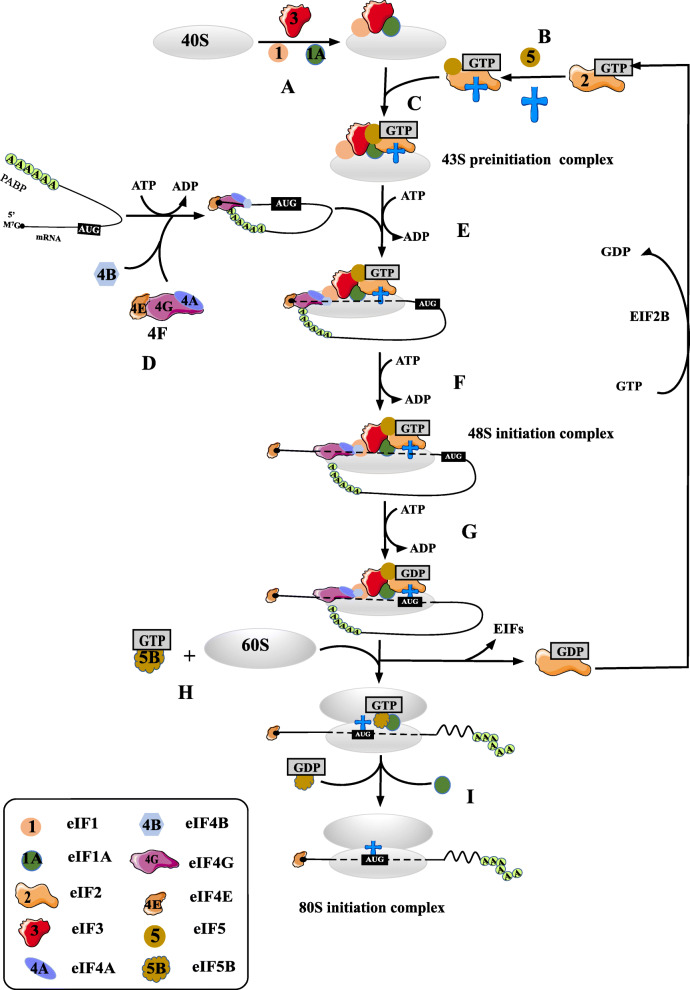Fig. 1.
Schematic representation of the pathway of eukaryotic translation initiation. The whole process of eukaryotic translation initiation can be divided into nine stages: a the recycling of separated ribosomal subunits and eIFs which are generated from the previous mRNA translations. b the formation of eIF2-GTP-Met-tRNAiMet ternary complex. c the formation of 43S PIC which is composed of eIF2-GTP-Met-tRNAiMet ternary complex, 40S ribosomal subunits, eIF1, eIF1A, eIF3 and eIF5. d the activation of mRNA by eIF4F complex with the assistance of eIF4B, eIF3 and PABP. e the attachment of 43S PIC to mRNA. f the scanning of mRNA 5’UTR in a 5’-3’ direction by 43S PIC. g the recognition of start codon and the formation of 48S initiation complex. h the jointing of 60S ribosomal subunits to the 48S complex with the assistance of eIF5B-GTP and eIF1A, and the concomitant displacement of eIF2-GDP and other factors including eIF1, eIF3, eIF4B, eIF4F and eIF5. i hydrolysis of eIF5B-bound GTP and release of eIF1A and eIF5B-GDP from the 80S ribosome, mRNA translation enters the elongation stage

